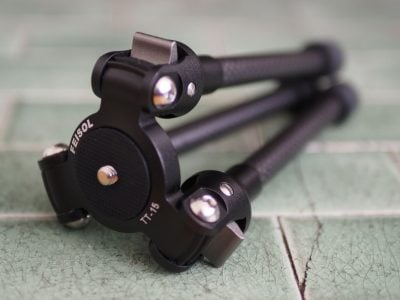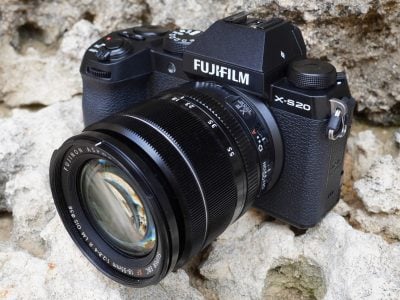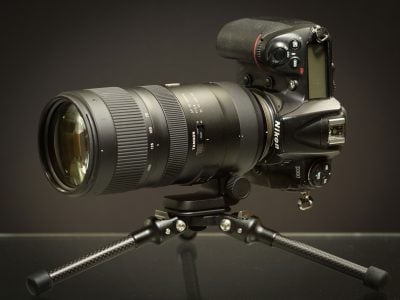Tamron 70-200mm f2.8 VC G2 review
-
-
Written by Thomas
Quality
Longitudinal Chromatic Aberration and focus shift
Lenses with focal ratios of f2.8 or larger are often prone to longitudinal color aberrations (loCA, a.k.a. “axial color” or “bokeh CA”). These show up as magenta coloration in the foreground and greenish hues in the background and are not easily corrected in post-processing. The new Tamron shows only little loCA and no focus shift to speak of although when you stop down the background becomes sharper much faster than the foreground.
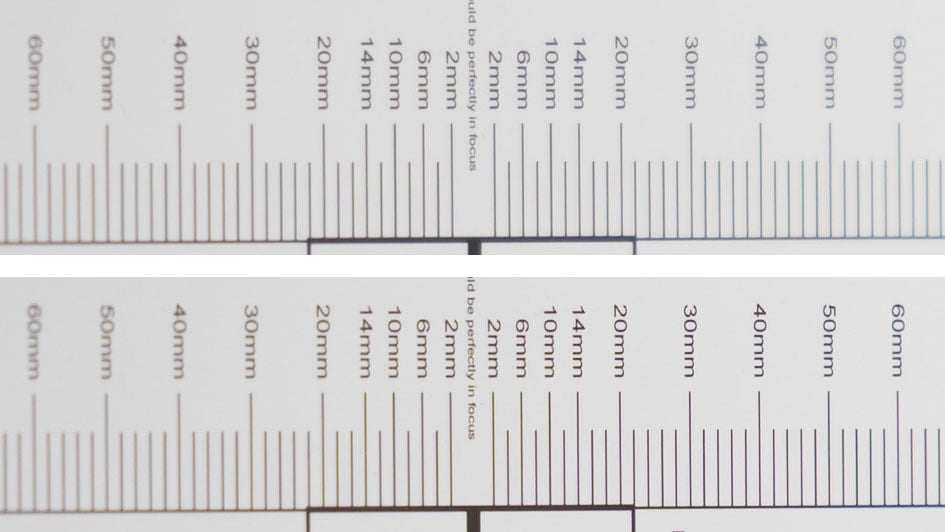
Above: Tamron 70-200/2.8 VC G2 Longitudinal Chromatic Aberration (loCA). 100% crop, 200mm, f2.8 (top), f4.0 (bottom), left = foreground, right = background
The Nikon shows even less coloration than the Tamron:
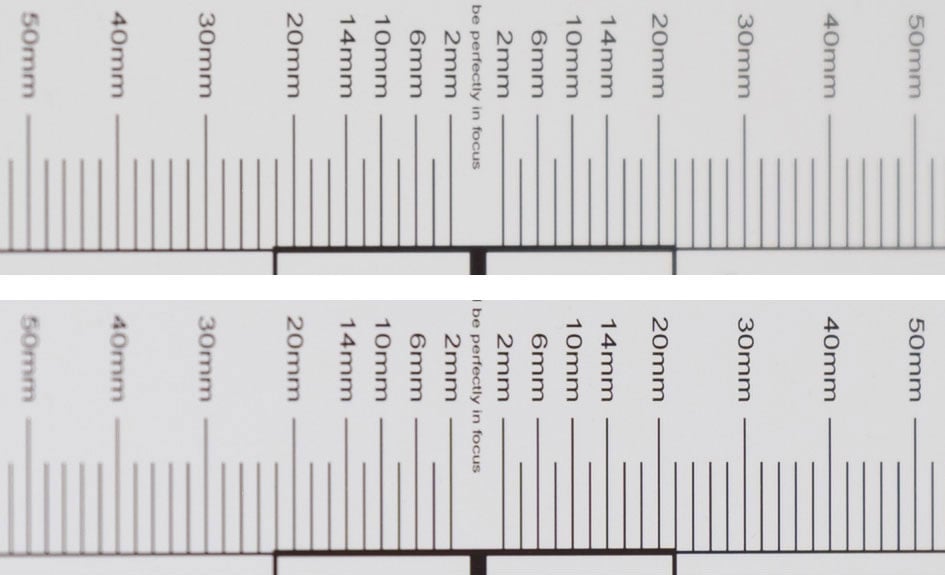
Above: Nikon 70-200/2.8E VR Longitudinal Chromatic Aberration (loCA). 100% crop, 200mm, f2.8 (top), f4.0 (bottom), left = foreground, right = background
Sharpness and contrast
Let’s have a look at the theoretical performance of the new lens (first pair of MTF-charts) at the wide and the long end first and compare it to the performance of the Nikon 70-200/2.8E VR (second pair of MTF-charts):

Above: Tamron 70-200/2.8 VC G2 MTF; left at 70mm, f2.8; right at 200mm, f2.8

Above: Nikon AF-S 70-200mm f/2.8E VR MTF; left at 70mm, f2.8; right at 200mm, f2.8
These charts show the lens-performance at f2.8 without influence of diffraction. To read these charts you need to know that higher values are better and the closer the line-pairs are together the less astigmatism (= resolution depends on the orientation of the test-pattern) the lens has. The x-axis displays the distance from the optical axis (=center of the sensor) in mm. I’ll show you the real-life performance at 4 mm (center), 13 mm (APS-C/DX-corner), and 20 mm (FF/FX-corner) on a D810 below.
From the charts, the new Tamron should be the better performer as its lines almost always stay above the respective curves from the Nikon. But let’s see how this theoretical performance translates into real life results in the sharpness test based on Siemens-stars.
What follows are near-center results (first column) followed by APS-C/DX-corner results and FF/FX-corner results on a D810. Processing was done in Lightroom 6.8 from RAW at Camera Standard settings. Noise-reduction is set to 0, sharpening to 35/0.5/36/10, with no extra tone, color, or saturation-adjustment. White-balance was adjusted to a neutral white and I did some exposure compensation to make the brightness of all crops match. So you will not see light fall-off in the corners. CA-removal is ON. In my comparative shots with the “old” Tamron model A009 below I set sharpening to 70/0.5/36/10 to compensate for the slightly softening effect of the AA-filter of the D800 which was used for those shots.
The following are all 100% crops!
First up is an overview of the wide-open performance at different focal lengths. You can jump to the detailed results at different apertures and comparisons with other lenses by clicking on the crops of the respective focal length.
Tamron 70-200/2.8 VC G2 at f2.8; 100% crop from center, APS-C/DX-corner, FF/FX-corner

Above: 70mm, f2.8

Above: 105mm, f2.8

Above: 150mm, f2.8

Above: 200mm, f2.8
You can easily see that this lens performs quite well across its zoom-range with 105mm and 150mm producing the best image quality. If you want to see all the details, read on. Or fast-forward to the performance at long distances.
Tamron 70-200/2.8 VC G2 at 70mm; 100% crop from center, APS-C/DX-corner, FF/FX-corner

Above: 70mm, f2.8

Above: 70mm, f4.0

Above: 70mm, f5.6

Above: 70mm, f8.0

Above: 70mm, f11

Above: 70mm, f16
Following is a comparison with the competition at 70mm, f2.8:

Above: Tamron 70-200/2.8 VC G2 at 70mm, f2.8

Above: Tamron 70-200/2.8 VC (A009) at 70mm, f2.8

Above: Nikon 70-200/2.8E VR at 70mm, f2.8
The new Tamron is better than its predecessor in the FF/FX-corner but otherwise looks very similar. The Nikon is super sharp in the APS-C/DX image-circle but a bit softer in the FF/FX-corner.
Tamron 70-200/2.8 VC G2 at 105mm; 100% crop from center, APS-C/DX-corner, FF/FX-corner

Above: 105mm, f2.8

Above: 105mm, f4.0

Above: 105mm, f5.6

Above: 105mm, f8.0

Above: 105mm, f11

Above: 105mm, f16
Following is a comparison with the competition at 105mm, f2.8:

Above: Tamron 70-200/2.8 VC G2 at 105mm, f2.8

Above: Tamron 70-200/2.8 VC (A009) at 105mm, f2.8

Above: Nikon 70-200/2.8E VR at 102mm, f2.8
Similar results at 105mm focal length where the Nikon wins in the APS-C/DX image-circle while the new Tamron G2 produces clearly the best FF/FX-corner.
Tamron 70-200/2.8 VC G2 at 150mm; 100% crop from center, APS-C/DX-corner, FF/FX-corner

Above: 150mm, f2.8

Above: 150mm, f4.0

Above: 150mm, f5.6

Above: 150mm, f8.0

Above: 150mm, f11

Above: 150mm, f16
Following is a comparison with the competition at 150mm, f2.8:

Above: Tamron 70-200/2.8 VC G2 at 150mm, f2.8

Above: Tamron 70-200/2.8 VC (A009) at 155mm, f2.8

Above: Nikon 70-200/2.8E VR at 150mm, f2.8
At 150mm the old Tamron A009 is clearly left behind by both new lenses. The Nikon still has a slight advantage in the center and the APS-CC/DX-corner over the new Tamron G2 and a slight disadvantage in the FF/FX-corner.
Tamron 70-200/2.8 VC G2 at 200mm; 100% crop from center, APS-C/DX-corner, FF/FX-corner

Above: 200mm, f2.8

Above: 200mm, f4.0

Above: 200mm, f5.6

Above: 200mm, f8.0

Above: 200mm, f11

Above: 200mm, f16
Following is a comparison with the competition at 200mm, f2.8:

Above: Tamron 70-200/2.8 VC G2 at 200mm, f2.8

Above: Tamron 70-200/2.8 VC (A009) at 200mm, f2.8

Above: Nikon 70-200/2.8E VR at 200mm, f2.8
At 200mm the new Tamron is a tad sharper than the Nikon in the center but lags a bit behind at the APS-C/DX- and the FF/FX-corner.
Overall Tamron’s new design is a clear improvement over the A009 model and is even reaching and sometimes surpassing the performance of the reference Nikon zoom. The Tamron G2 is very sharp at the edges of a full-frame sensor except at 200mm. But it is not the sharpest in the center (except for 200mm) although resolution and contrast are still on a very high level. An impressive feat!
The Siemens-star test-targets are shot at a distance of 40x focal length (i.e. at 8 m for 200 mm focal length). But performance of lenses also depends on the shooting distance. Therefore I present another series of test-shots of a city-scape around 2km away. Processing was done in Lightroom 6.8 from RAW at Adobe Standard settings. Noise-reduction is set to 0, sharpening to 35/0.5/36/10, with no extra tone, or saturation-adjustment. There’s no tinkering with vignette-control so you see it here as it is produced by the lens. I used AF in live view at the largest aperture and did not change focus for other apertures.
First up is an overview of the wide-open performance at different focal lengths. You can jump to the detailed results at different apertures and comparisons with other lenses by clicking on the crops of the respective focal length.
Tamron 70-200/2.8 VC G2 at f2.8; 100% crop from center, APS-C/DX-corner, FF/FX-corner

Above: 70mm, f2.8

Above: 105mm, f2.8

Above: 150mm, f2.8

Above: 200mm, f2.8
Again this lens performs well across its zoom-range in this long distance test. If you want to see all the details, read on. Or fast-forward to the next chapter on rendering of point-light sources at night-shots.
The main image shows the complete scene at f2.8 to give you an impression of the angle of view and to judge vignetting. You can access the respective shots up to f16 via the links beneath the main image. All shots were made at ISO 64 and VR switched off. Following the main image are 100% crops from the center, the APS-C/DX-corner and the FF/FX-corner from the new Tamron and the Nikon 70-200/2.8E VR at f2.8 to compare performance and then from the new lens at f4.0 down to f11. The shots with the Nikon 70-200/2.8E VR are from another day with less haze. That improves the overall contrast but you can still well compare the level of detail.
You can click on each image to access the large original. Please respect our copyright and only use those images for personal use.
Results at 70mm focal length:
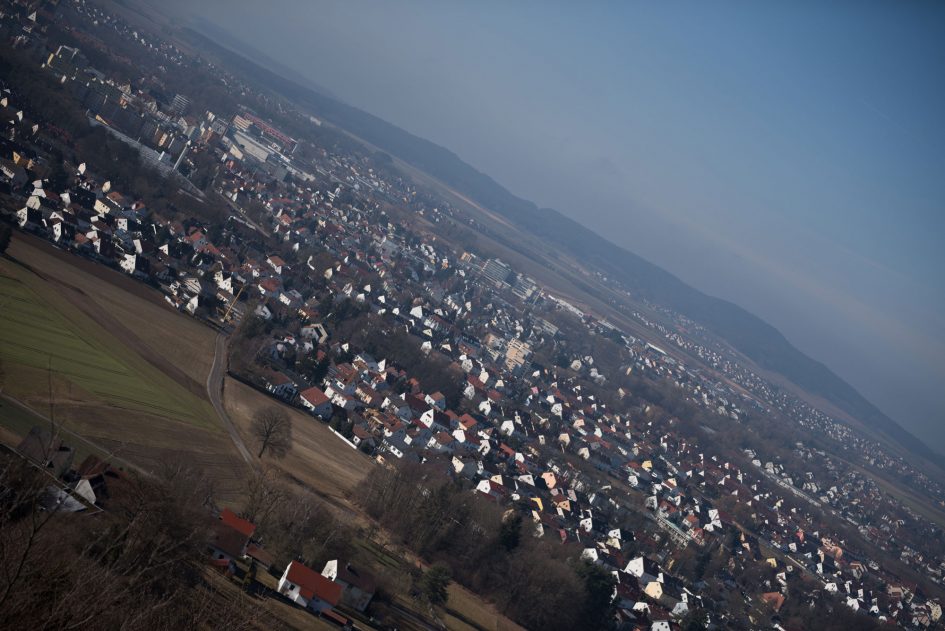
Above: Tamron 70-200/2.8 VC G2 at 70mm, f2.8; also available at f4.0, f5.6, f8.0, f11, f16

Above: Tamron 70-200/2.8 VC G2 at 70mm, f2.8; 100% crop from center, DX-corner, FX-corner

Above: Nikon 70-200/2.8E VR at 70mm, f2.8; 100% crop from center, DX-corner, FX-corner
At 70mm the Nikon is better in the APS-C/DX image-circle while both lenses perform similarly at the FF/FX-corner.

Above: Tamron 70-200/2.8 VC G2 at 70mm, f4.0; 100% crop from center, DX-corner, FX-corner

Above: Tamron 70-200/2.8 VC G2 at 70mm, f5.6; 100% crop from center, DX-corner, FX-corner

Above: Tamron 70-200/2.8 VC G2 at 70mm, f8.0; 100% crop from center, DX-corner, FX-corner

Above: Tamron 70-200/2.8 VC G2 at 70mm, f11; 100% crop from center, DX-corner, FX-corner
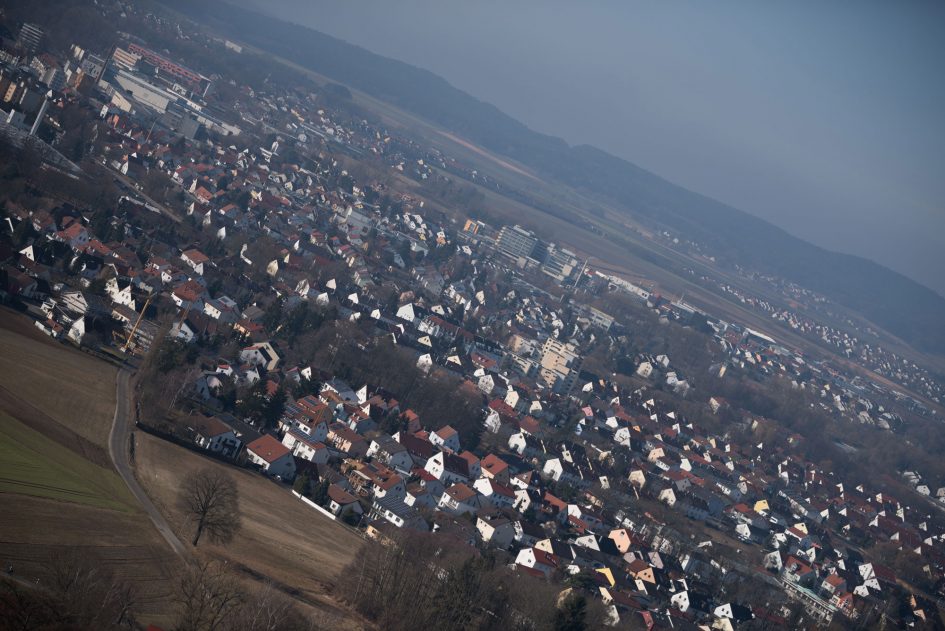
Above: Tamron 70-200/2.8 VC G2 at 105mm, f2.8; also available at f4.0, f5.6, f8.0, f11, f16

Above: Tamron 70-200/2.8 VC G2 at 105mm, f2.8; 100% crop from center, DX-corner, FX-corner

Above: Nikon 70-200/2.8E VR at 105mm, f2.8; 100% crop from center, DX-corner, FX-corner
The center is a win for the Nikon, the APS-C/DX-corner is a draw and in the FF/FX-corner the new Tamron G2 leads.

Above: Tamron 70-200/2.8 VC G2 at 105mm, f4.0; 100% crop from center, DX-corner, FX-corner

Above: Tamron 70-200/2.8 VC G2 at 105mm, f5.6; 100% crop from center, DX-corner, FX-corner

Above: Tamron 70-200/2.8 VC G2 at 105mm, f8.0; 100% crop from center, DX-corner, FX-corner

Above: Tamron 70-200/2.8 VC G2 at 105mm, f11; 100% crop from center, DX-corner, FX-corner
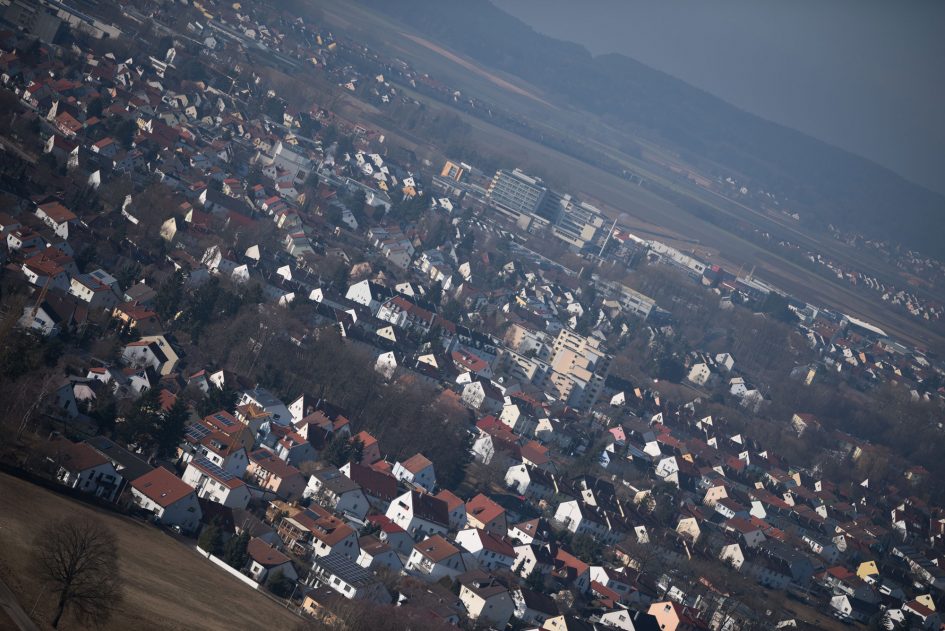
Above: Tamron 70-200/2.8 VC G2 at 150mm, f2.8; also available at f4.0, f5.6, f8.0, f11, f16

Above: Tamron 70-200/2.8 VC G2 at 150mm, f2.8; 100% crop from center, DX-corner, FX-corner

Above: Nikon 70-200/2.8E VR at 150mm, f2.8; 100% crop from center, DX-corner, FX-corner
Same at 150mm. Center: Nikon wins; FF/FX-corner: Tamron wins.

Above: Tamron 70-200/2.8 VC G2 at 150mm, f4.0; 100% crop from center, DX-corner, FX-corner

Above: Tamron 70-200/2.8 VC G2 at 150mm, f5.6; 100% crop from center, DX-corner, FX-corner

Above: Tamron 70-200/2.8 VC G2 at 150mm, f8.0; 100% crop from center, DX-corner, FX-corner

Above: Tamron 70-200/2.8 VC G2 at 150mm, f11; 100% crop from center, DX-corner, FX-corner
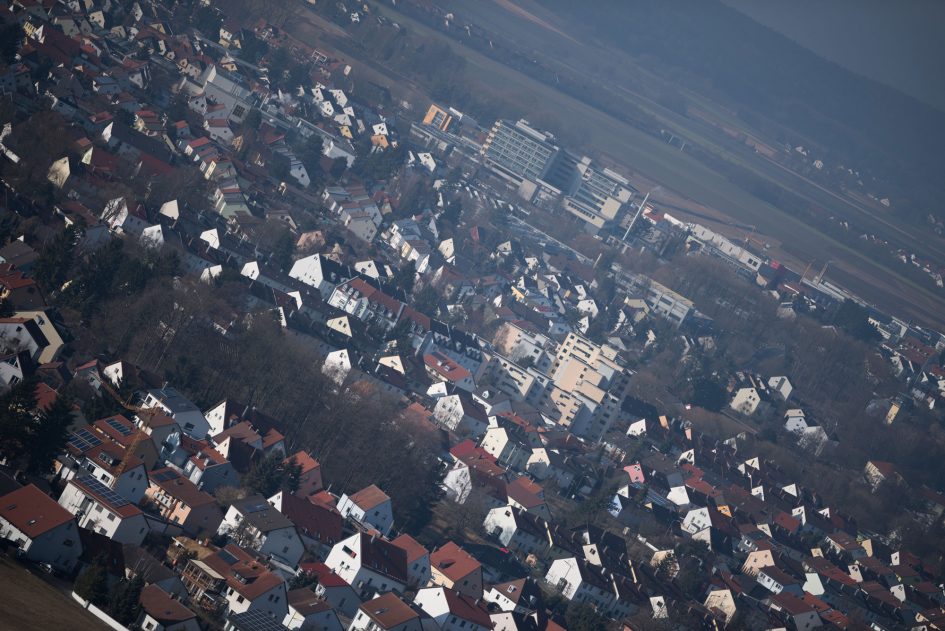
Above: Tamron 70-200/2.8 VC G2 at 200mm, f2.8; also available at f4.0, f5.6, f8.0, f11, f16

Above: Tamron 70-200/2.8 VC G2 at 200mm, f2.8; 100% crop from center, DX-corner, FX-corner

Above: Nikon 70-200/2.8E VR at 200mm, f2.8; 100% crop from center, DX-corner, FX-corner
The center of the new Tamron G2 suffers a bit from the stronger haze at that day although level of detail is very good, on the same level as the Nikon. In the APS-C/DX-corner and the FF/FX-corner results are also comparable.

Above: Tamron 70-200/2.8 VC G2 at 200mm, f4.0; 100% crop from center, DX-corner, FX-corner

Above: Tamron 70-200/2.8 VC G2 at 200mm, f5.6; 100% crop from center, DX-corner, FX-corner

Above: Tamron 70-200/2.8 VC G2 at 200mm, f8.0; 100% crop from center, DX-corner, FX-corner

Above: Tamron 70-200/2.8 VC G2 at 200mm, f11; 100% crop from center, DX-corner, FX-corner
In this long distance test the new Tamron repeated its good performance which bodes well for using this lens with a teleconverter.
Rendering of point-light sources at night-shots
Night-shots pose a different challenge for lenses as the contrast is even higher than under bright sun and point-light sources can reveal some weaknesses such as coma, haloing and color-aberrations that do not show up as prominently in other test-shots. The 100% crops below the main image show the effect of coma in the FF/FX corner of this lens at 70mm focal length and various apertures:
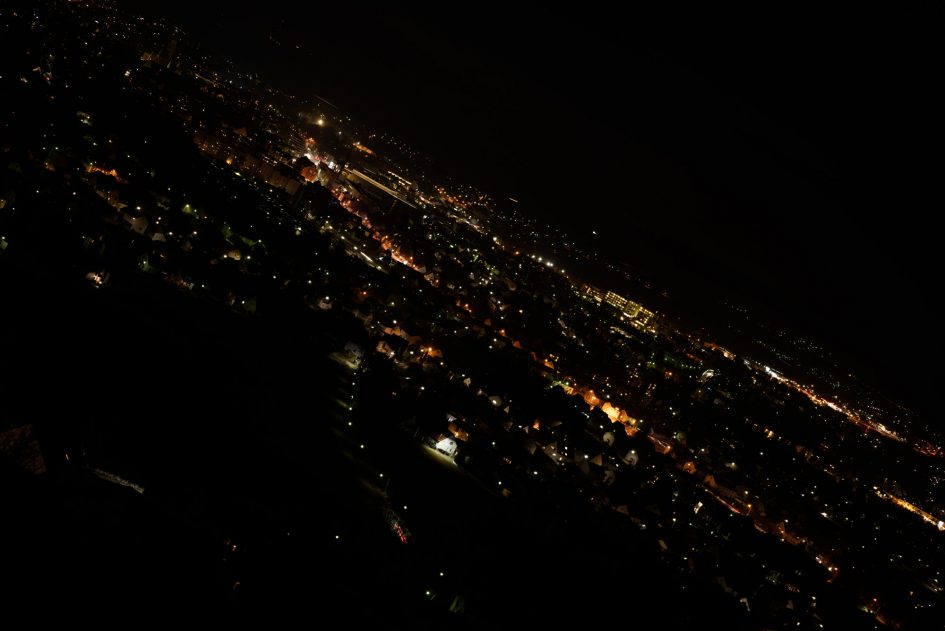
Above: Tamron 70-200/2.8 VC G2 at 70mm, f2.8. Click image to access original at Flickr; also available at f4.0, f5.6, f8.0

Above: Tamron 70-200/2.8 VC G2 at 70mm; FX corner at f2.8, f4.0, f5.6
The new Tamron has very little coma at f2.8, even less than the Nikon 70-200/2.8E VR (see below). Astonishing!

Above: Nikon 70-200/2.8E VR at 70mm; FX corner at f2.8, f4.0, f5.6
Rendering of out-of-focus point-light sources and Bokeh
This test is for the rendering of point-light sources in an out-of-focus background. The circle of confusion that is produced by this test is pretty indicative of Bokeh performance (in the background) and light fall-off. Ideally the out-of-focus image of the point-light is evenly lit and perfectly circular, with no “onion-rings”, and without coloration. Large aperture lenses normally produce an effect known as “cat’s eye” the further away from the optical axis the point-light is projected. This is due to optical vignetting in the lens barrel when light enters the lens from an angle.
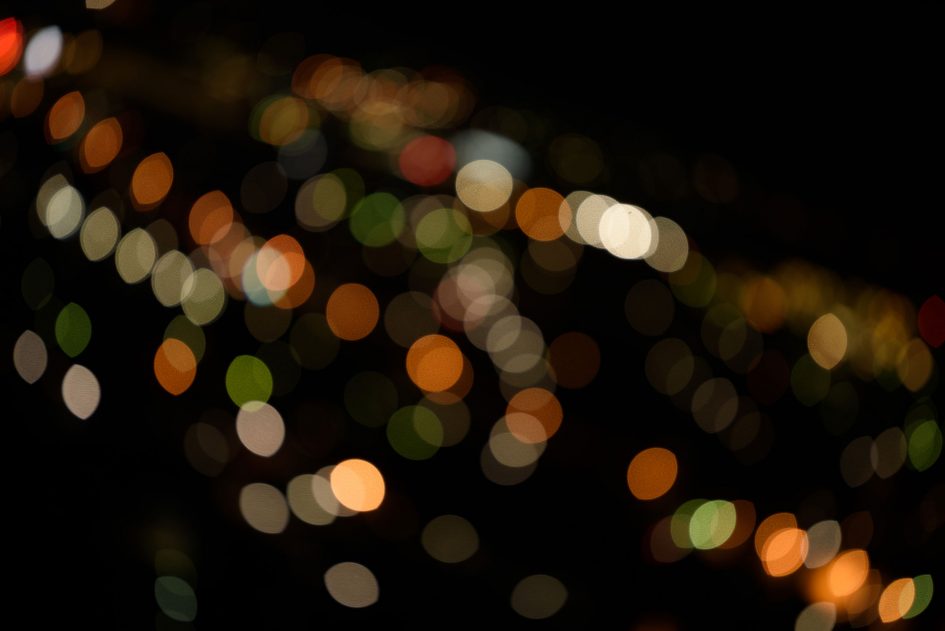
Above: Tamron 70-200/2.8 VC G2 at 200mm, f2.8. Click image to access original at Flickr; also available at f4.0, f5.6, 8.0

Above: Tamron 70-200/2.8 VC G2 at 200mm, f2.8. 50% crop from center, DX-corner, FX-corner
The 50% crops above show that the Tamron 70-200/2.8 VC G2 produces good-sized Bokeh balls when used wide open. It exhibits no onion rings but creates a blotchy structure inside the circles of confusion. The light-distribution across the circle is very even, outlining is moderate and shows no green coloration from loCA. There’s an obvious cat’s eye effect which reduces the size of the Bokeh balls towards the corners and may generate some nervousness in out-of-focus areas there. The lens produced only a weak clipping from the mirror-box at the top of the image. The Nikon 70-200/2.8E VR is similar but shows a smoother texture. Its Bokeh balls are larger but that may be due to some difference in the test setup as the entrance pupil of both lenses is of identical size.

Above: Nikon 70-200/2.8E VR at 200mm, f2.8. 50% crop from center, DX-corner, FX-corner; also available at f4.0, f5.6, f8.0
Now let’s see how this analysis of out-of-focus point-light sources translates into Bokeh-performance shooting a bookshelf. I used the longest focal length that I could to produces a comparable shot to my other reviews which was in the case of the new Tamron 175mm:
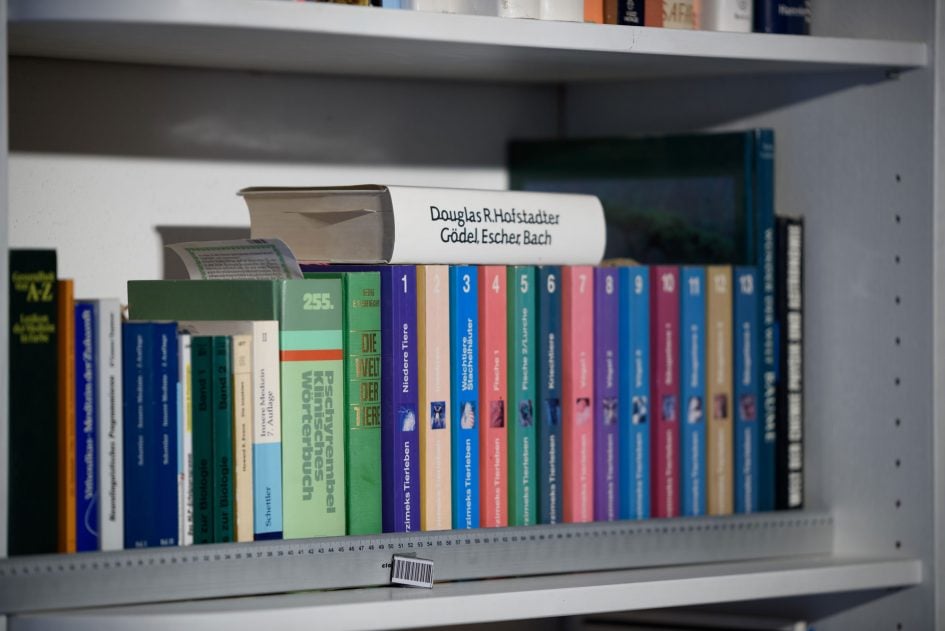
Above: Tamron 70-200/2.8 VC G2 at 175mm, f2.8. Click image to access original at Flickr; also available at f4.0, f5.6, f8.0

Above: Tamron 70-200/2.8 VC G2 at 175mm, f2.8. 50% crop from foreground, middle-ground, background
Let’s see how the Nikon 70-200/2.8E VR compares. To achieve the same magnification as before I had to only zoom in to 150mm focal length:

Above: Nikon 70-200/2.8E VR at 150mm, f2.8. 50% crop from foreground, middle-ground, background; also available at f4.0, f5.6, f8.0
Comparing both the new Tamron is a bit softer in the background but just a tad more nervous in the foreground. In the transition-zone just behind the plane of sharpest focus the new Tamron has a somewhat softer transition than the Nikon.
Flare/ghosting
Catching a strong light-source shining directly into the lens is always a risky business. It could produce strange colorful ghosts-images or reduce contrast considerably through flare and glare. The appearance of flare and ghosting depends on factors like the aperture and the angle of the light hitting the lens. So to judge the proclivity of the Tamron for these artifacts I went through a series of well calculated shots against a strong light source to provoke glare and ghosting. The lens hood was attached in all of these tests.
The new lens is pretty prone to flare and glare. Especially on the long end having a strong light-source inside or even just outside the corner of the frame (see image on the right below) should be avoided as veiling glare and ghosting heavily reduces the contrast:
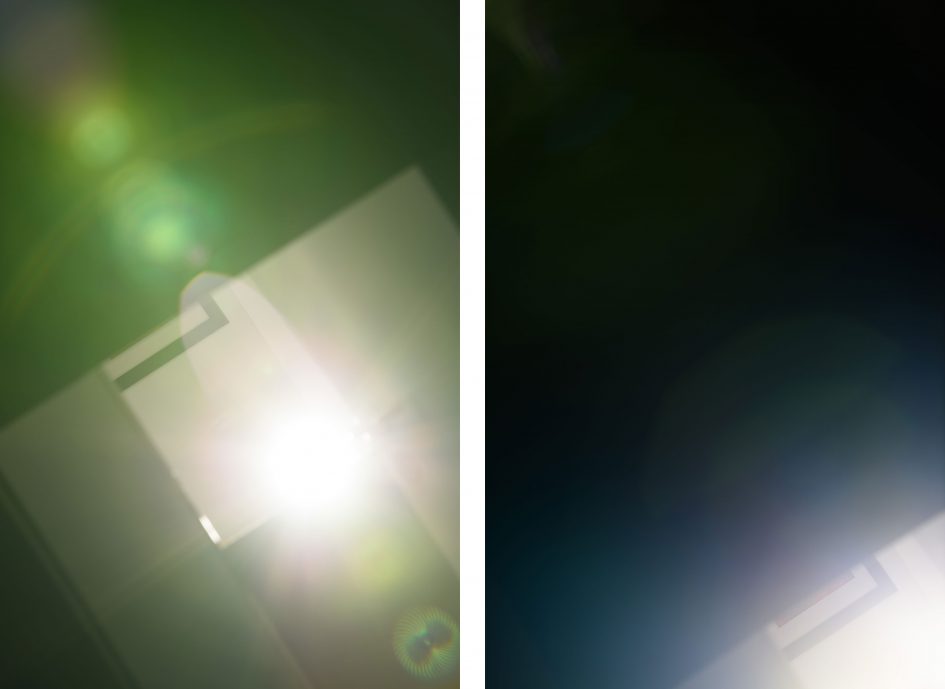
Above: Flare and ghosting. Strong light hitting the Tamron 70-200/2.8 VC G2 at 200mm, f8.0
On the short end the lens behaves less critical and maintains overall contrast much better. Still it produces clearly visible flares and ghosts when the light is inside the frame. Following are two of the more extreme effects:
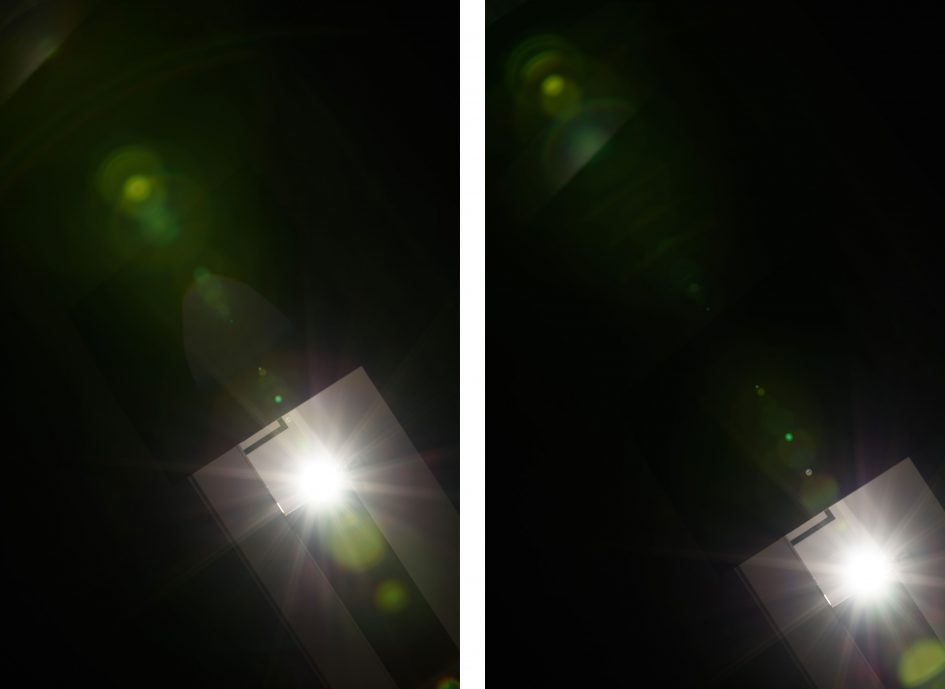
Above: Flare and ghosting. Strong light hitting the Tamron 70-200/2.8 VC G2 at 70mm, f8.0
I also tested Tamron’s new zoom extensively with teleconverters. If you’re interested in the performance of the combination head over to my Tamron TC-X14 / TC-X20 teleconverter review.
Check prices at Amazon, B&H, Adorama, eBay or Wex. Alternatively get yourself a copy of my In Camera book, an official Cameralabs T-shirt or mug, or treat me to a coffee! Thanks!
